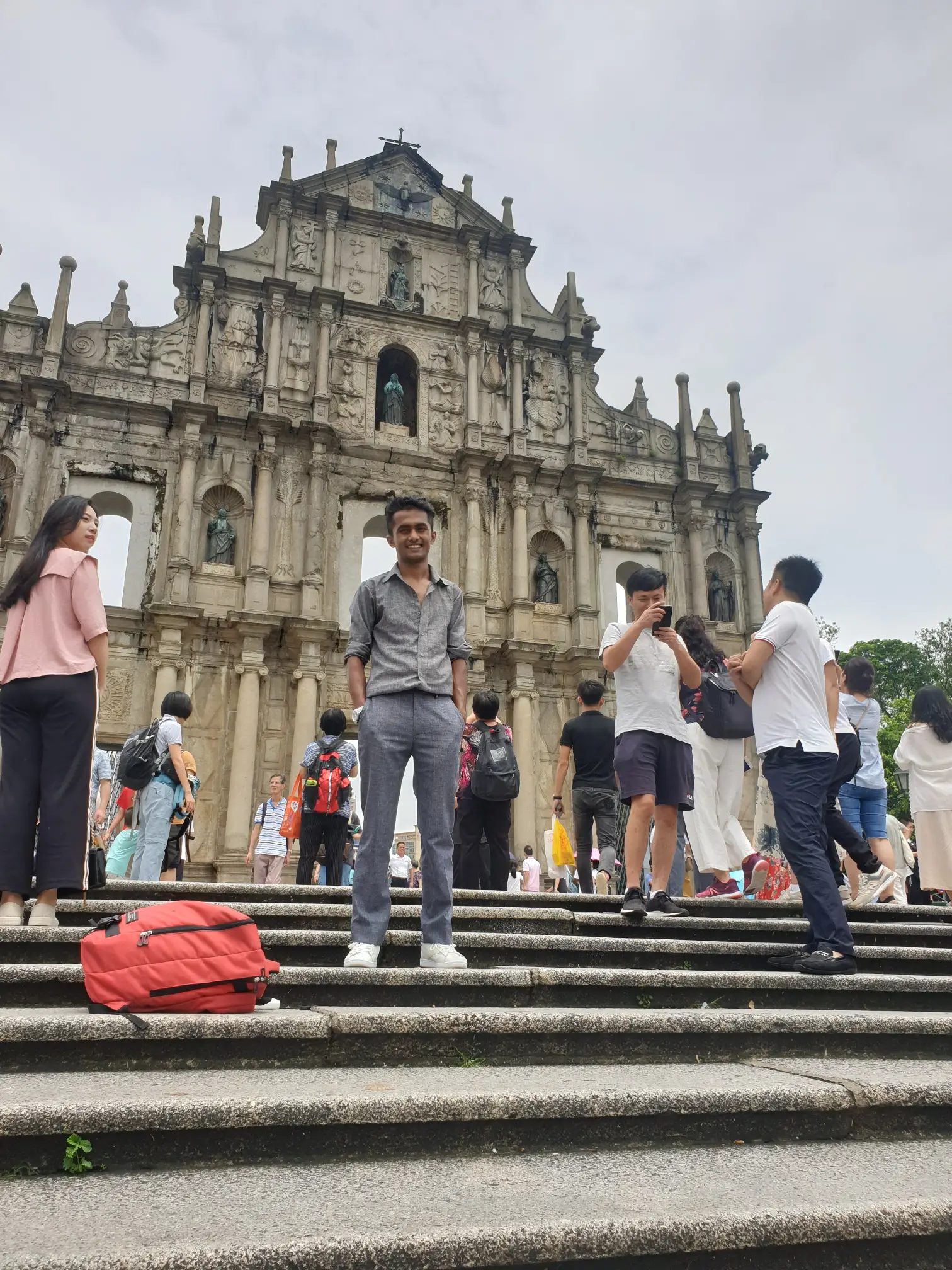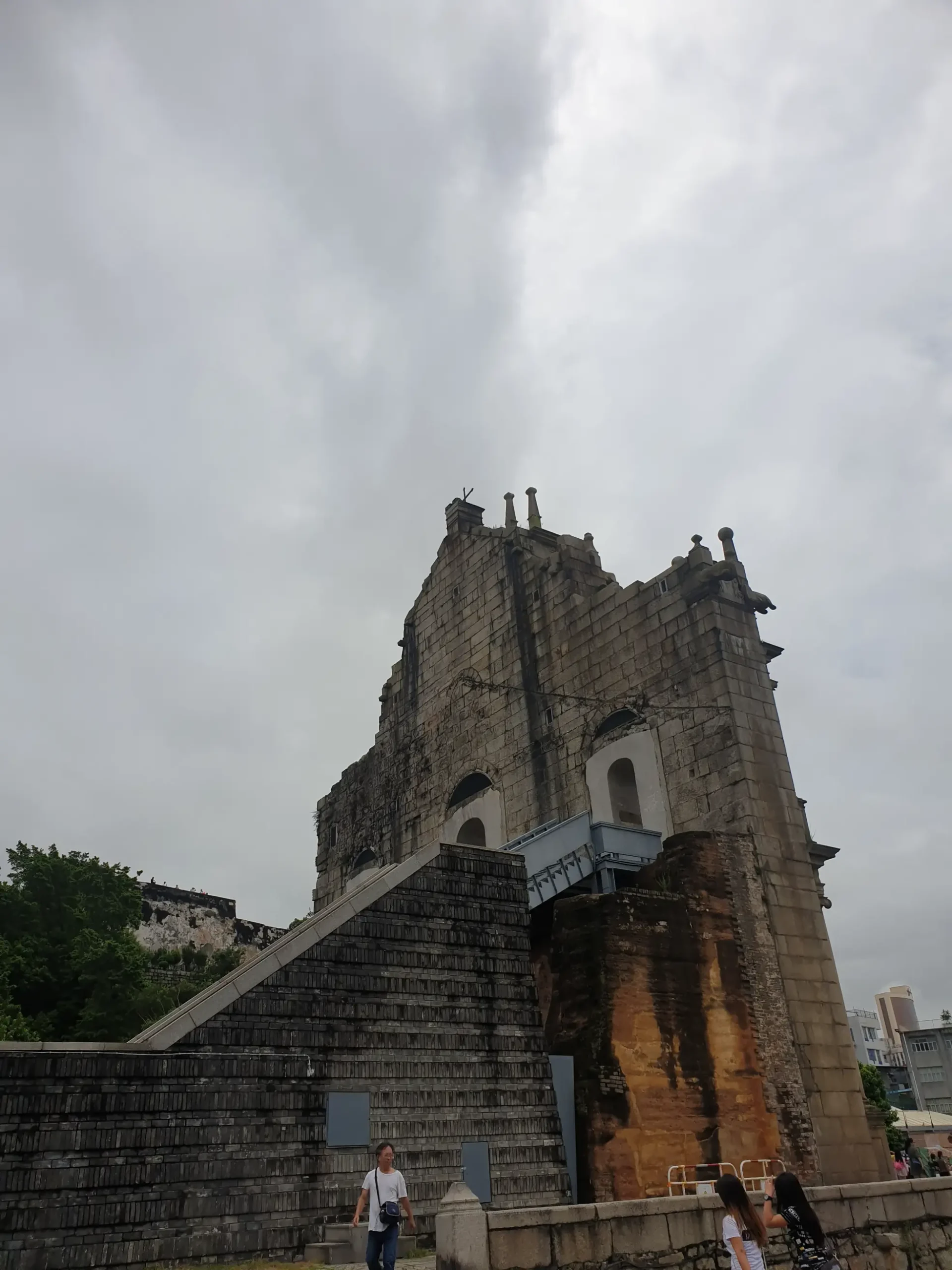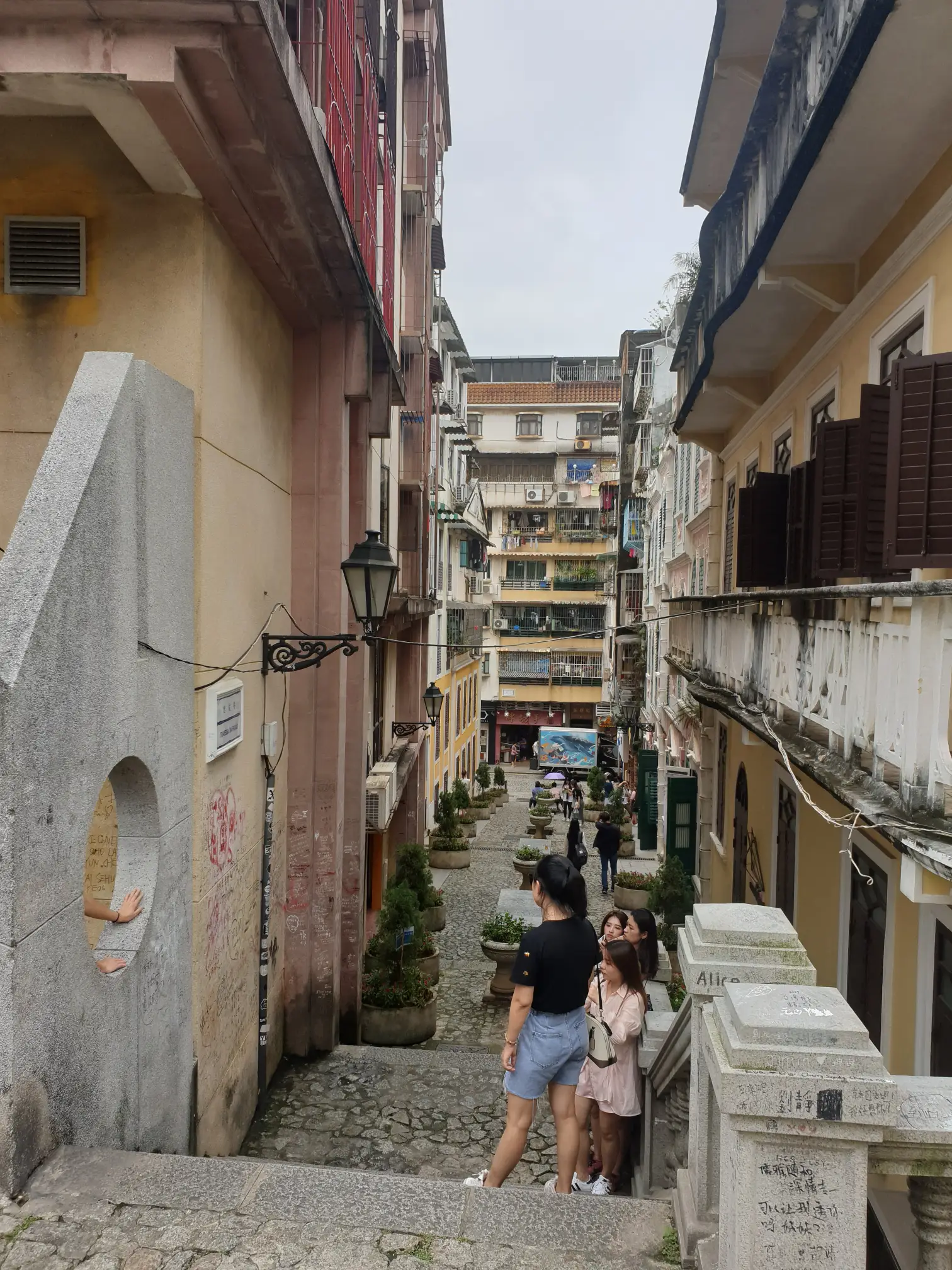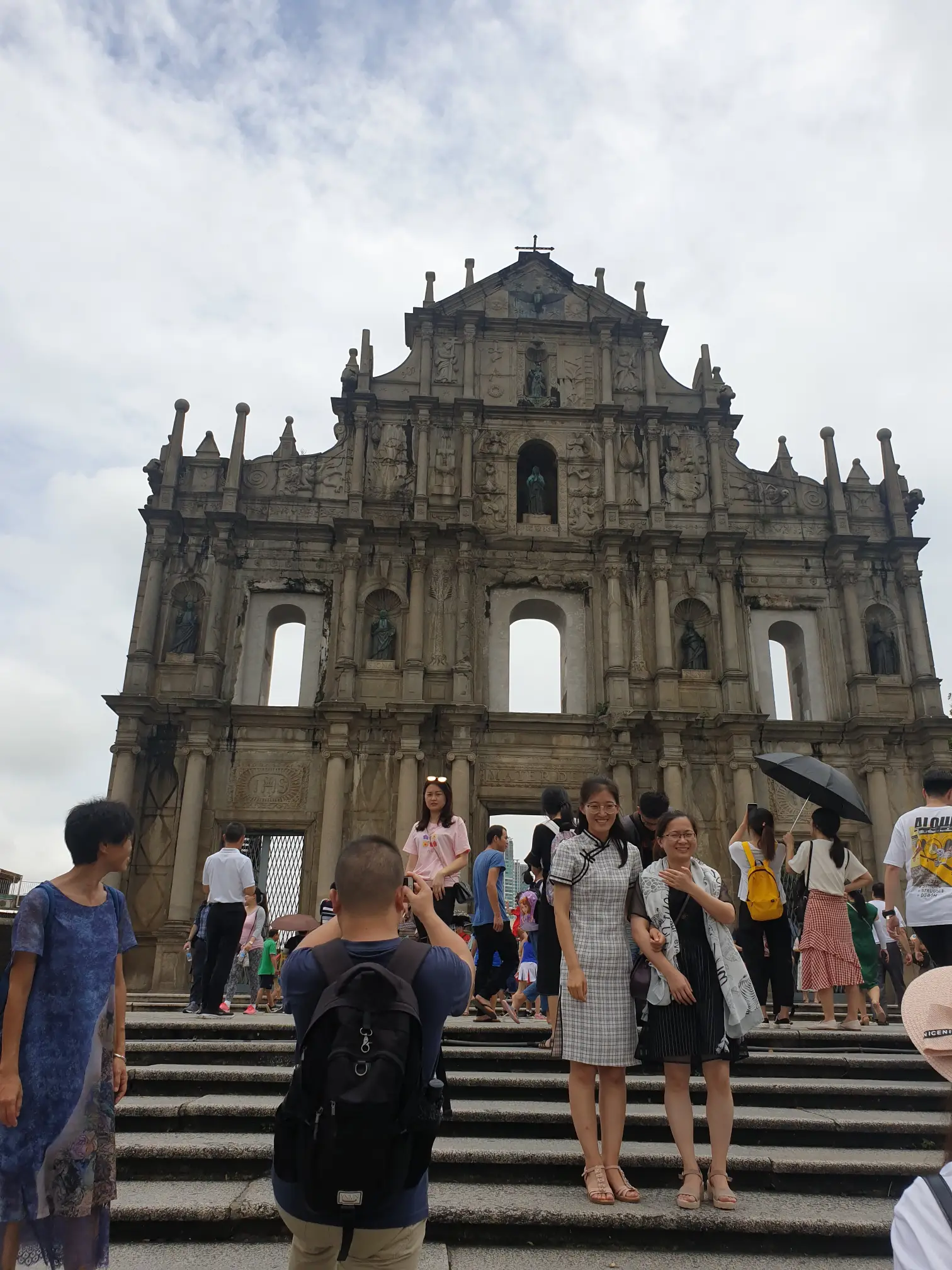Ruins of St. Paul’s: A Marvel of Macau’s Rich History
The Ruins of St. Paul’s (Portuguese: Ruínas de São Paulo, Chinese: 大三巴牌坊) stands as one of Macau’s most enduring symbols and a testament to its rich cultural and historical heritage. Located near the heart of Macau’s historic center, this iconic landmark tells the story of the city’s unique blend of Portuguese and Chinese influences. What remains of the once-grand Church of St. Paul is a stunning granite façade and a monumental staircase, both of which attract millions of visitors each year.

Despite its current state as a ruin, the site carries immense cultural significance, offering a glimpse into Macau’s role as a hub of religion, culture, and trade during the colonial period. Whether you’re a history enthusiast, an architecture lover, or a casual traveler, the Ruins of St. Paul’s is a must-visit destination that captures the essence of Macau’s unique identity.
A Brief History of the Ruins of St. Paul’s
The Church of St. Paul was originally constructed between 1602 and 1640 by Jesuit missionaries as part of St. Paul’s College, the first Western-style university in East Asia. It was not just a religious institution but also a center of learning, spreading Christianity and Western knowledge across the region.
The church itself was an architectural marvel of its time, combining European Renaissance and Baroque styles with Asian craftsmanship. Built using Japanese and Chinese labor, the Church of St. Paul symbolized the cultural and religious exchange that characterized Macau’s colonial era.

Tragedy struck in 1835 when a typhoon caused a fire that engulfed the church. The flames consumed the wooden structure, leaving only the granite façade, the grand staircase, and the crypt intact. Despite the destruction, the ruins gained cultural and spiritual significance over time and became a UNESCO World Heritage Site in 2005, as part of the Historic Centre of Macau.
Today, the Ruins of St. Paul’s serves as both a tourist attraction and a symbol of resilience, standing tall amidst Macau’s modern skyline.
The Stunning Architecture
The surviving façade of the Ruins of St. Paul’s is a masterpiece of design that speaks volumes about the ingenuity of its builders. It rises four stories high and is intricately carved, blending elements of European Renaissance and Baroque architecture with Asian influences.
The façade is adorned with detailed carvings and symbolic imagery:
- Biblical Scenes and Saints: Statues of saints like St. Paul and images from the life of Christ reflect the church’s Catholic roots.
- Asian Motifs: Chinese dragons, Japanese chrysanthemums, and other Eastern symbols highlight the cultural exchange that defined Macau during its colonial era.
- Latin Inscriptions: Religious texts and phrases carved in Latin pay homage to the Jesuit mission in the region.

The imposing stone staircase leading to the façade adds to its grandeur, providing an iconic vantage point for photos. The carvings and symbols on the façade invite closer inspection, revealing stories and meanings that reflect the blending of East and West.
Why Visit the Ruins of St. Paul’s?
A Symbol of East Meets West – Few landmarks encapsulate the fusion of cultures like the Ruins of St. Paul’s. As a Portuguese Catholic church built in Asia using local labor, it stands as a symbol of Macau’s multicultural history. Visitors can admire the way European and Asian architectural styles harmoniously coexist in this singular structure.
Historical and Cultural Significance – As part of the Historic Centre of Macau, a UNESCO World Heritage Site, the Ruins of St. Paul’s serves as a powerful reminder of Macau’s colonial history. It reflects the city’s pivotal role in the spread of Christianity in Asia and its position as a cultural melting pot during the 17th century.

Breathtaking Views – Climbing to the back of the façade rewards visitors with panoramic views of Macau’s old town. The juxtaposition of historical charm and modern cityscape is both unique and captivating.
A Photographer’s Dream – The Ruins of St. Paul’s is one of Macau’s most photographed landmarks. The detailed carvings, imposing staircase, and picturesque surroundings make it a perfect spot for capturing memorable moments.
What to Do at the Ruins of St. Paul’s
Explore the Façade and Surroundings – Take your time to admire the façade up close. The intricate carvings and detailed sculptures offer a visual feast, with each symbol and figure telling a story. Walk along the grand staircase, which provides the perfect perspective to appreciate the scale and artistry of the ruins.
Visit the Museum of Sacred Art and Crypt – Located beneath the ruins, the Museum of Sacred Art is a hidden gem that houses religious artifacts, paintings, and sculptures from the church’s history. The crypt contains the remains of Christian martyrs and saints, offering a somber but fascinating insight into Macau’s religious past.
Explore Nearby Attractions – The Ruins of St. Paul’s is surrounded by other historical landmarks, such as Monte Fort, which offers additional views of the city, and Na Tcha Temple, a small Chinese temple showcasing Macau’s cultural diversity.
Shop and Dine Around Senado Square – Just a short walk from the ruins, Senado Square is a bustling area filled with shops, cafes, and restaurants. Sample local delicacies like egg tarts or enjoy a traditional Portuguese meal at one of the nearby eateries.
Tips for Visiting Ruins of St. Paul’s
- Plan Ahead: Visit early in the morning or late afternoon to avoid crowds, especially during weekends and holidays.
- Bring a Camera: The site offers countless photo opportunities, from the detailed carvings of the façade to the views of Macau’s skyline.
- Explore Beyond the Ruins: Take time to visit nearby attractions like Monte Fort and Senado Square to round out your experience.
How to Get to the Ruins of St. Paul’s
The Ruins of St. Paul’s is conveniently located in Macau’s historic center and easily accessible:
- By Bus: Many local buses stop near the ruins, including routes 3, 10, 18, and 28B. Alight at the Rua de São Paulo stop.
- By Taxi: Taxis are readily available in Macau, and simply mentioning “Ruins of St. Paul’s” will get you there.
- On Foot: If you’re in Senado Square, it’s a 10-minute walk through charming cobblestone streets lined with shops and cafes.
FAQs About the Ruins of St. Paul’s
1. Is there an entrance fee?
No, visiting the Ruins of St. Paul’s is free of charge.
2. What are the visiting hours?
The ruins are open to the public 24/7. However, the Museum of Sacred Art and Crypt is open from 9:00 AM to 6:00 PM, closed on Tuesdays.
3. How much time do I need to explore?
You’ll need about 30–60 minutes to explore the ruins and museum.
4. Can I visit at night?
Yes, the ruins are beautifully lit at night, creating a romantic and serene atmosphere perfect for evening photography.
5. What should I do nearby?
Visit Monte Fort, Senado Square, and Na Tcha Temple, all within walking distance of the ruins.
The Ruins of St. Paul’s is a must-visit destination for anyone exploring Macau. Its breathtaking architecture, rich history, and cultural significance make it a standout attraction. Whether you’re drawn by the historical intrigue, the stunning views, or simply the beauty of its design, the Ruins of St. Paul’s promises an unforgettable experience that captures the essence of Macau’s unique blend of East and West.









